What Camera To Use For Narrowband Filters
This is a sensitive and state-of-the-art color astronomy camera with 1.2 MP resolution and high download speeds.
The ZWO ASI224MC has a small-scale sensor; this is perfect for beginners to accept images of the planets and the Moon.
Its low price makes it i of the first choices for beginners. Tin can be used for deep-sky astrophotography, information technology'south highly sensitive to faint objects despite being marketed as a planetary camera.
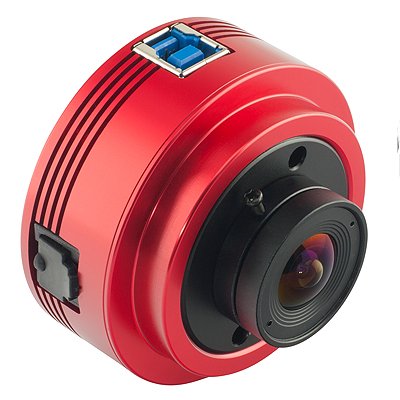
Maybe the best targets are simply the smaller DSO objects, just at least you'll see what a camera with no IR filter and thermoelectric cooling looks like and you lot'll get a lot of experience using dedicated cameras similar this one.
I'm recommending this camera, non just for planets; after, you can utilize information technology for your auto-guiding setup, which volition further justify the toll. This is probably the best camera to start with along your DSLR. A small only groovy investment to start your night sky imaging. The photographic camera volition exceed any expectations!
Check the cost of ZWO ASI224MC CMOS Color Astronomy Camera here
What we liked
- Integrated thermoelectric cooling
- Fisheye lens included
- Cheap for its performance
- Fast frame charge per unit
- High quality and sensitivity
- No IR cut filter
- Works great with about applications
What we didn't like
- You demand an external power source for cooling
Sensor type: CMOS
Sensor size: 6,i mm (1/2.5")
Resolution: 1.2 MP
Frame charge per unit: 150 – 299 fps
Weight: 14.6 oz (410 k)
Matching lens for astrophotography: SkyWatcher S11510 Maksutov-Cassegrain 102mm
2. Pentax K-iii DSLR Camera
This is a solid photographic camera at a very, very good toll with a large sensor and not bad low light performance.
Perhaps it's the best digital camera that can be used for astrophotography at this cost range.
This is Pentax's current flagship camera, which means they held dorsum no options, and information technology tin can operate at temperatures equally low as fourteen° F (-10° C).
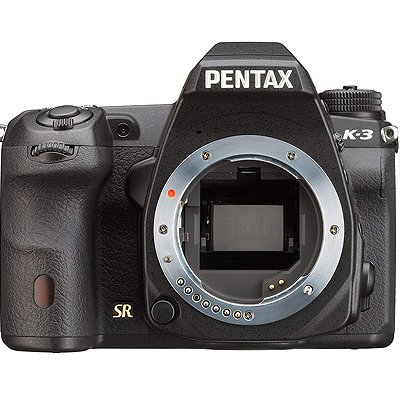
At that place are no capabilities reserved for more than expensive cameras in the line, and that should eliminate whatever buyer'south remorse. It has an incredible 200,000 shutter release life-span.
The only words of caution I would requite is that this is not an 'entry-level' camera if y'all are buying it for regular photography and you are used to feature poor cameras; this is on the reverse side. Very professional person level oriented camera, it will be a joy for any enthusiast that would like to improve his/her capabilities.
Bank check the price of Pentax K-iii DSLR Camera here
What we liked
- Built like a tank, very durable
- All the pro options are included
- Great ISO upwardly to 51200
- Weather sealed torso
- Dual SD carte du jour slots
What we didn't like
- Mirror auto flap issue (make certain yous have the latest firmware)
3. Sony a7 III Full-Frame Mirrorless
Probably the all-time full-frame camera for regular photography at this price point, it'south a almost-perfect all-around photographic camera.
If yous desire a bully digital photographic camera for professional person photography and occasional astrophotography, so this is information technology.
Some are saying that Sony works improve with lens adapter and other manufacturer lenses than the original manufacturers.
With its large sensor, yous'll get most of your telescope'southward field of view.
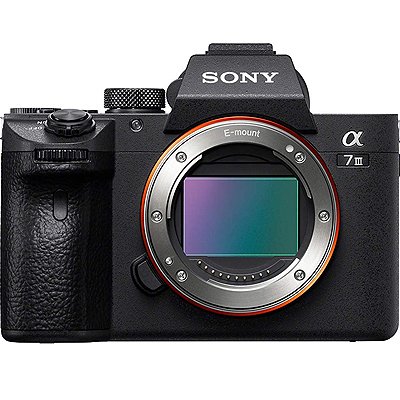
The low-light performance is amazing, with minimal grain at 12,800 ISO. The 120p performance is impeccable. I believe this is a fantastic camera for hybrid users who do both photography and astrophotography.
I've seen some shots made by this kind of camera with removed IR filter, and those await stunning. That means even at this price point; I would recommend you remove the IR filter and make very nice astrophotos with your scope and even improve nightscapes with your widefield lenses.
Check the price of Sony a7 Three Full-Frame Mirrorless here
What nosotros liked
- Total frame is e'er a plus
- Supports extended ISO upwardly to 204,800
- Tilt display
- 2 memory card slots, one with UHS-II support
What we didn't like
- A bit pricey if in use simply for astrophotography
Sensor type: CMOS
Sensor size: Full frame / 35 mm
ISO: 100-51,200 Extended ISO: l, 64,000 – 204,800
Resolution: 24 MP
Frame rate: 120 fps (video)
Weight: 33 oz (945 one thousand)
Matching lens for astrophotography: Iron 200-600mm F5.6-six.3 Thou OSS
4. ZWO ASI1600MM Pro 16 MP CMOS
This is probably the best defended astro-camera at this price range and this is i of the virtually pop out there.
Information technology has a somewhat smaller sensor at micro 4/iii", simply it'due south a really good monochromatic one.
Integrated thermoelectric (TEC) cooling reduces sensor temperature to -35° C beneath ambient to enable low-noise imaging at very long exposures.
A separate 12V/3A ability supply is required to ability the TEC cooler.
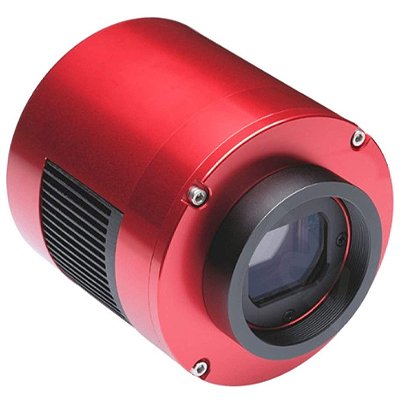
The photographic camera has full ASCOM compatibility, practically any capture application of your choice can be used with this i. With this camera, you tin can capture those nice, deep ruby narrowband wavelengths, which are not possible with the regular, non-modified cameras.
You'll as well need a filter bicycle with this monochrome photographic camera. In general, the ASI1600 is a joy to use both for beginners and advanced users alike, as it is easy and intuitive to use.
Afterwards using a DSLR, you lot'll be stunned by how low the racket of this camera is, especially when thermoelectrically cooled. With 50 images stacked, the racket will exist nonexistent. It is a powerful tool used to take incredible images.
Check the price of ZWO ASI1600MM Pro 16 MP CMOS here
What nosotros liked
- Powerful sensor
- Integrated TEC
- 12-scrap color depth
- Connects to 1.25" and 2" telescope focusers
What nosotros didn't like
- Somewhat pocket-sized sensor
- Ability supply not included
5. ZWO ASI071MC-Pro 16 Megapixel USB3.0 Colour Astronomy Photographic camera
Very good colour astro-photographic camera with a fairly large advanced APS-C sensor.
Probably nigh equally skilful equally you lot are going to get with a CMOS camera and remarkably low noise.
This camera shows what is possible with OSC at a depression price!
Integrated TEC cooling reduces sensor temperature to -35° C below ambient to enable low-noise imaging.
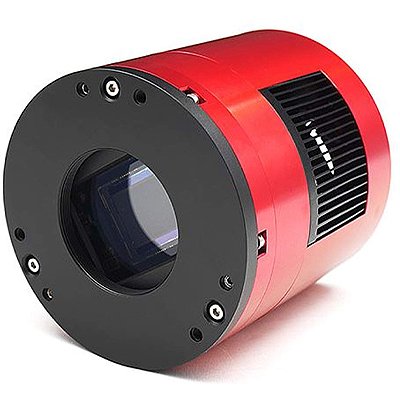
You'll need a split 12V/3A ability supply for the cooling system. There is a built-in tilter; this will allow you to proceed your sensor parallel to the focal aeroplane at no additional cost.
There is a controllable anti-dew window heater, but in my feel, a dew heater strip is a must to ensure no condensation and frost at higher humidity. With good optics, you'll savour using this powerful and sensitive camera.
Check the cost of ZWO ASI071MC-Pro Color Astronomy Photographic camera here
What we liked
- Has the wow gene
- Wider field of view imaging
- fourteen-bit colour depth
- Integrated TEC
- 256MB DDR3 retentivity buffer
What nosotros didn't like
- No dew heater strip included
Source: https://www.planetguide.net/astrophotography-camera/
Posted by: harrisonriseed.blogspot.com

0 Response to "What Camera To Use For Narrowband Filters"
Post a Comment